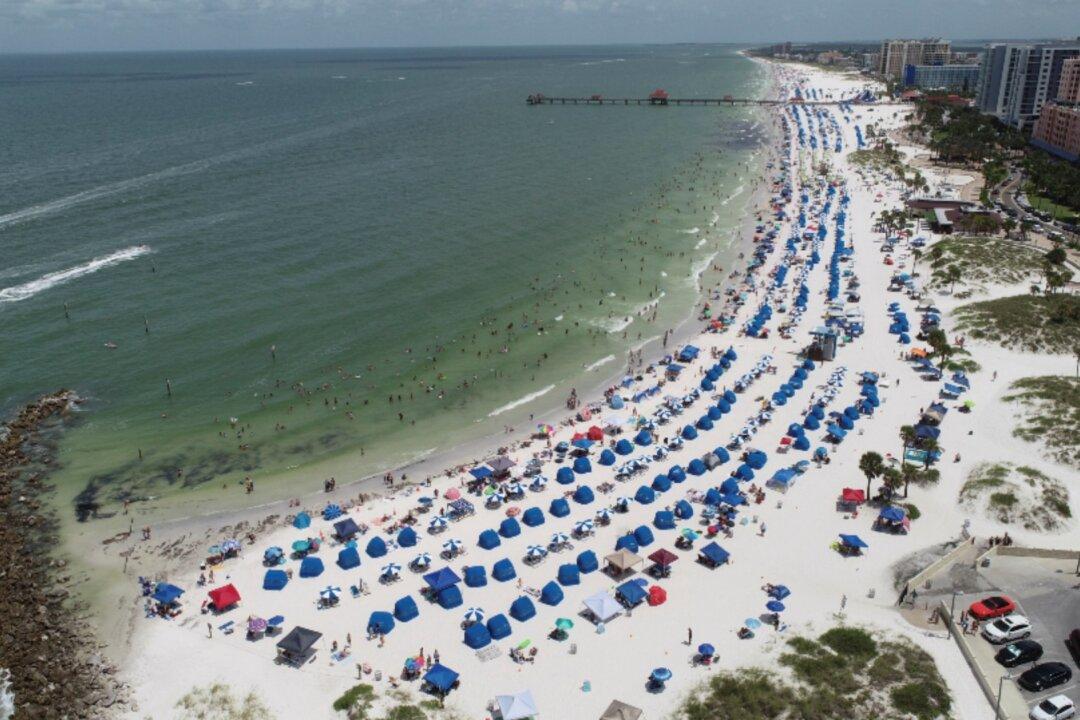A seaweed blob spanning 5,000 miles, nearly twice the width of the United States, is heading toward the Florida Gulf coast, with officials warning that the thick mat of algae poses environmental and health concerns as it approaches the shore.
Known as sargassum, the brown seaweed floats in open oceans, and is considered mostly harmless—while serving as a habitat for fish and crustaceans. Sargassum blooms are not a unique phenomenon, but the current one is noteworthy, mainly owing to its enormous scale: it is so big that it can be seen from space.





